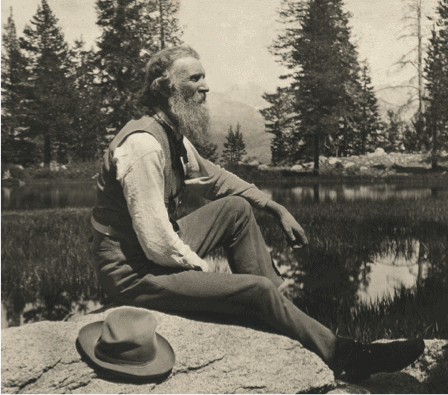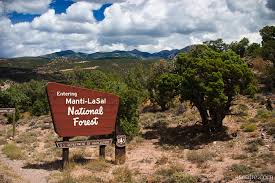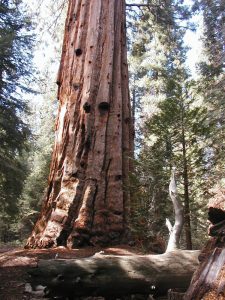I think one of the ways it’s easy to talk past each other is that some people have a philosophy of “letting things alone” (philosophical, abstract). Other people tend to be more concrete (would 15 or 30 snags per acre be better for a species of woodpecker?). Perhaps (this is a hypothesis) collaboration that works from with concrete kinds of people can’t fundamentally work out with philosophical differences. Some people have criticized some environmentalists as being “religious” in the sense of holding strong beliefs that are not based on reason. I think there may be something to the difficulty of successfully mediating philosophical disputes. For example, in religion there are unitarians and trinitarians.. no one has proposed duotarianism as a way for them all to get along. But folks can either burn each other at the stake or agree to disagree. In subsequent posts, I’ll be doing more digging into the philosophies underlying folks’ views.
My bolds.
Anyway, this is an interesting article from the WaPo that touches on John Muir’s philosophy. I bolded the religious adjectives.
No one is more important to the history of environmental conservation than John Muir — the “wilderness prophet,” “patron saint of the American wilderness” and “father of the national parks” who founded the nation’s oldest conservation organization, the Sierra Club. But on Wednesday, citing the current racial reckoning, the group announced it will end its blind reverence to a figure who was also racist.
As Confederate statues fall across the country, Sierra Club Executive Director Michael Brune said in an early morning post on the group’s website, “it’s time to take down some of our own monuments, starting with some truth-telling about the Sierra Club’s early history.” Muir, who fought to preserve Yosemite Valley and Sequoia National Forest, once referred to African Americans as lazy “Sambos,” a racist pejorative that many black people consider to be even more offensive than the n-word.
While recounting a legendary walk from the Midwest to the Gulf of Mexico, Muir described Native Americans he encountered as “dirty.”
Muir’s friendships in the early 1900s were equally troubling, the Sierra Club said. Henry Fairfield Osborn, a close associate, led the New York Zoological Society and the board of trustees of the American Museum of Natural History and, following Muir’s death, helped establish the American Eugenics Society, which labeled nonwhite people, including Jews at the time, as inferior.
The Sierra Club isn’t the only organization that is shaking its foundations. Leaders of predominantly white, liberal and progressive groups throughout the field of conservation say they are taking a hard look within their organizations and don’t like what they see.
African American and other minority employees are pointing out the lack of diversity in green groups and the racial bias that persists in top and mid-level management.
…..
The roots of American environmentalism are grounded in a reverence for nature and racism. Muir’s contemporaries at the turn of the last century included Madison Grant, a co-founder of the Bronx Zoo who wrote “The Passing of the Great Race, or The Racial Basis of European History,” an argument for white supremacy in which he decried the decline of Nordic people.
Former president Theodore Roosevelt, who created the first national parks, praised the 1916 book, which helped shape the views the future leader of Nazi Germany. Adolf Hitler, who would go on to write the anti-Semitic autobiography “Mein Kampf,” called Grant’s book, “my bible.”
Within mainstream environmental groups, diversity is lacking
Given the troubled history of the groups, black and brown activists who have long complained about unfair funding and lack of attentions to their communities weren’t impressed.
“The big white green groups have all issued racial justice statements — a good first baby step,” said Robert Bullard, a Texas Southern University professor and activist who helped restart the National Black Environmental Justice Network this month.
“In my opinion, none of them have taken a strong stand in the way their white privilege sucks up damn near all the green dollars from foundations and donors, away from people of color.”
Environmental and climate justice groups work in communities with the greatest need, said Bullard, a founder of the environmental justice movement that started when African American, Latino, Native American and other environmentalists gathered for the first time in D.C. in 1991 and vowed to fill the gaps big green groups missed.
For more than 30 years, environmental justice groups have deployed paltry budgets to fight big battles over power plants, refineries, landfills and other projects that foul the air and land around black and Latino communities. Ludovic Blain, who attended the second environmental summit a decade after the first, said activists often worked without pay.
“If you’re very used to not getting funded, people are used to doing it free,” Blain said. “The environmental movement has a lot of philanthropic money, there’s enough money to go around.”
According to its tax filing, the Sierra Club had assets of more than $106 million in 2018, and the Union of Concerned Scientists had nearly $40 million. One group, the Nature Conservancy, had assets and grants that totaled more than $1 billion that year. Another, the Natural Resources Defense Council, had more than $350 million.
A view of Yosemite Valley from the Tunnel View lookout point in Yosemite National Park in California. John Muir’s activism helped lead to the creation of the park.
A view of Yosemite Valley from the Tunnel View lookout point in Yosemite National Park in California. John Muir’s activism helped lead to the creation of the park. (Apu Gomes/AFP/Getty Images)
That compares to about $2 million for the Deep South Center for Environmental Justice in New Orleans and $2.5 million for West Harlem Environmental Action in New York. Los Jardines Institute, another environmental justice group, had about $300,000 in revenue in 2018.“If you had told me two decades ago that millions of dollars would be going to Latino environmental justice work, I would never have guessed it would have been through Natural Resources Defense Council,” Blain said.
The nation’s biggest philanthropies have traditionally given to established environmental groups. The Hewlett Foundation, for example, has given about half a million dollars a year to the Natural Resources Defense Council’s lands program for a quarter-century, but last year it informed the organization that it would be giving that money to more-local groups such as Outdoor Afro, GreenLatinos and the Hispanic Access Foundation.








